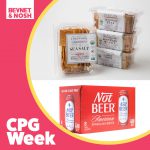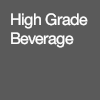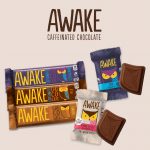Q&A: How Brands Can Get In Restaurants and On Menus

CPG companies are always hungry to get brands on shelf, but, increasingly, companies are looking to get brands called out on menus, too.
This week, organic burger chain Bareburger announced it will be selling Impossible Foods’ meatless burger at one location in New York City. The company said in a release it will roll out the burger to all of its locations after Impossible Foods increases production. The plant-based “bleeding” burger is one example of a brand with name recognition that restaurants and food service groups are trying to add to their offerings.
Darren Tristano, president of restaurant research and consulting firm Technomics, talked to NOSH during this month’s New England Foods Show in Boston, Mass. about the ways food service can be a profitable space for CPG companies and how brands can better position their products as ingredients in restaurants, be it limited service, fast-casual or full service.
MM: What are some of the basic things brands should be thinking of when trying to get into the food service space?
DT: Well, ultimately you want to get your food into the restaurant and do it at a volume that you are going to have a nice opportunity to make more money. Branding is going to be the most important. The stronger the brand, plus the greater the consumer awareness, the more important it is to an operator to list your brand. Because typically what we find with research is if consumers feel the brand is higher quality because it is branded versus more private label, they are willing to pay more for it.
But the quality has to fit the brand that’s offering it. So you are not going to be Chobani necessarily trying to get into McDonald’s, but if you are Chobani and you want to get your yogurt into a [restaurant] then you are probably looking at an area something more upscale where the branding is more meaningful. We are seeing a lot more of this, especially in natural and organic, shifting from the retail side over to the food service side. It’s a tremendous opportunity for a lot of suppliers.
MM: What about if you are a smaller food brand? Does that make entering the restaurant world more challenging?
DT: If you’re a smaller brand, or a regional brand, it is actually getting to be quite easy these days because there is a huge rise in local inspiration and local sourcing. When you’re a brand and you are trying to get into a restaurant, you wouldn’t necessarily start nationally, you’d start with a regional brand that is coming out of a certain area. In the Boston area, maybe it’s 99 Restaurants. And if it is a product that customers know and respect, it is easier for them to see it and they will identify and give credit to the restaurant for bringing that brand in, showing they have more local roots.
MM: What are some of the limiting factors CPG companies should consider — whether it’s from a branding perspective, packaging, or otherwise– when looking to partner with restaurants?
DT: The first thing would be to recognize whether the brand you are trying to get into the restaurant fits with that type of restaurant. So Udi’s has a line of gluten-free muffins and breads. A large brand like McDonald’s might not be the right place, but you could be looking at more the bakery cafes where it would fit to have that alternative. I think it starts with what is oriented well for your brand.
When you look at the restaurant industry, it is very big. If you’re thinking about limited service, you’ve got fast food and fast casual, often it’s going to be how do you get your products on racks, how do you get it in front of the customer. Starbucks does a good job of this. They do merchandising; they do different products, whether there are power bars or mints right in front of the register. They have been able to find that way to make an incremental sale, the grab-and-go, but that means the packaging and the service size is going to be really important.
A lot of full service restaurants don’t have the grab-and-go, don’t have the option of doing it. So branding it on the menu is going to be important. Specifically, you’re seeing more desserts being branded in the restaurants because it’s easier and less expensive. But ultimately, the product needs to fit the restaurant and its customer, and the packaging, especially if it’s kind of an add-on. And ultimately, if it’s full service, it’s getting into the recipe book and then getting onto the menu so the customer can give credit to that product.
MM: Let’s talk about when brands get called out on menus. Specifically, I’m thinking about the huge success of the Impossible Burger, which actually has been known to draw crowds and lines that go up and down the street. Does that type of brand recognition success speak more to the current trends or the brand?
DT: Both. But when you have kind of a niche market that’s looking for a product that doesn’t exist in most places it becomes a catalyst for a large number of patrons going to it. The problem always winds up that it clearly shows there is a need for it, a demand for it, but as the industry broadens and starts to create that supply to fill that demand it is no longer as important to those customers. We often look at Krispy Kreme as a great example. It was a cult following, an incredibly craveable product, they expanded broadly across the U.S., they were in convenient stores, and gas stations, and grocery markets, and all of the sudden there were so many of them that no one really wanted them anymore so the market shrunk back to a point where supply and demand were in more equilibrium.
When you look at some of these, don’t jump on the bandwagon too quickly. If you are following some of these trends and staying ahead of the trends, you can often see that plant based products are coming and moving toward them without jumping there too quickly and over investing is the way to go. But clearly there is a demand, there is a market for it, and those are things we are going to see more of in the future.
MM: So do you think this ‘Krispy Kreme effect’ will occur in the natural space as a whole?
DT: Clearly, that is what is going to happen. What we have seen and research would predict is that the marketplace is reacting too quickly and moving too big in that direction. Often you are seeing the large mass restaurants are offering natural and organic products. All of the sudden you can go to a restaurant that didn’t have it and now you can find it there. It’s becoming a saturated market. As we go, the trends and the evolutions are so quickly moving today that the consumers can’t keep up with them and as a result over supply tends to be a concern.
MM: Let’s turn the tables here for a second. You recently wrote an article about how restaurants should consider entering the retail world. Why is this appealing?
DT: If we look back historically, you’ve seen Cracker Barrel for years has always sold items out of their store in the front of its restaurants. It’s a great place to kill some time, spend a little money. About 20 percent of their total revenues comes out of that store. If you’re a retailer today, it is getting harder and harder to bring more customers into the store and to really offset the higher cost of rent. Labor is going up, commodity is going up, so you’ve got to find ways to both sell your food outside of the restaurant, but also increase what you are selling.
The ability to have ingredients or accessories that you see in the bar or in the restaurant that can then be brought home and used there is very appealing to a lot of the restaurateurs. Ultimately, it is finding more ways to make more money within the four walls of the restaurant.
MM: Do you have any additional advice for younger natural food brands on how to navigate that convergence?
DT: I think what we talk a lot about is that it is very expensive to make natural foods taste good. I think that is ultimately the biggest problem in the restaurant industry. If you could do real foods or healthy foods cheap, it would be happening today. You have to recognize that it has to taste good. Price point is going to be important too, but if we look at the younger Gen Z and the millennial consumers, they are willing to pay more if it is a good product. And then, ultimately, it is the story. Whether you can communicate and do communicate your brand’s story is very important. It’s something [consumers] want to hear these days. Doing those things — making it taste good, trying to get it to a point where it is a fair price, and having a story about why it’s better and why it’s different — will make a bigger difference.












